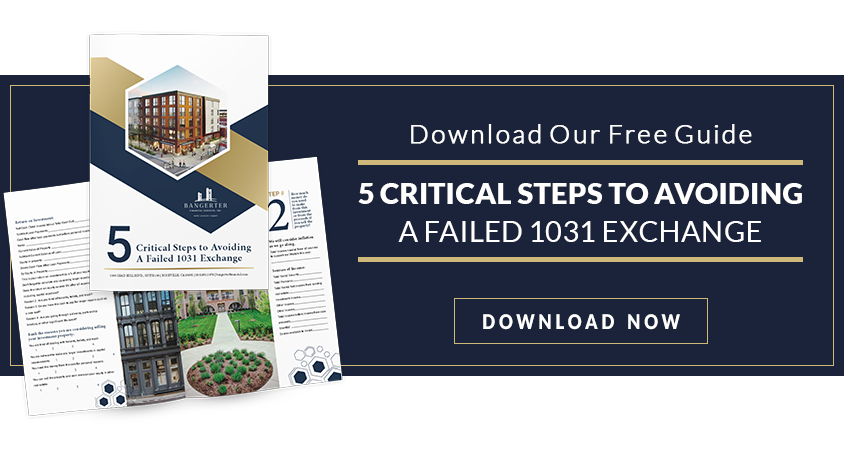If you’re thinking about selling your investment property, a 1031 exchange could potentially save you thousands of dollars in taxes. Although engaging in a 1031 exchange isn’t difficult, the process itself is fairly complex. You must ensure you follow a strict set of rules and meet all of the deadlines. Otherwise, you could cause the exchange to fail, lose the tax-favored status, and end up with a large bill from the IRS.
The good news is, a little bit of preparation can go a long way. Follow this five-step process before you engage a 1031 exchange and you’re much less likely to run into trouble along the way.
Step 1: Understand Why You’re Selling the Property
Start your analysis by checking in with yourself to determine why you’re thinking about selling your current property.
Are you tired of the hassle that comes with managing a physical property? Does the property need upgrades you’re not prepared to fund? Maybe you’ve realized the return on your investment isn’t quite where you need it to be?
Understanding the issues you’re currently dealing with will help you choose a suitable replacement property.
If you’re selling because you need cash, you may want to look into a partial 1031 exchange. This will allow you to pull out the cash you need while also deferring taxes on the remainder of the proceeds.
Step 2: Determine Your Financial Goals
It’s important to understand how much annual income you need your replacement property to generate. Begin by looking at the total amount of income you need to support your lifestyle. Then, write down all current sources of income, excluding the income you’re earning from the property you’re thinking about selling. Subtract this total from your total income goal.
If you have a shortfall, this is how much you need your new property to generate. If not, you’ll be able to invest the potential income you earn.
Step 3: Calculate Your Tax Burden
To determine whether a 1031 exchange is right for you, take a look at the amount of taxes you’ll owe if you decide to sell the property outright. Determine how much money this will leave you to invest and the rate of return you’ll need to earn to make up the income shortage calculated above. Then, consider whether you’re willing to take on the amount of risk necessary to achieve that rate of return.
Next, calculate your potential income if you do engage in a 1031 exchange. Determine how much you can earn while taking on a level of risk you're comfortable with. Then compare that to your income shortfall.
Step 4: Choose Your New Property Type
If you’ve gotten this far and decided that you do want to move forward with a 1031 exchange, the next step is to choose the type of investment property you want to purchase. The definition of a “like-kind” property gives you plenty of flexibility, so you’ll have many types of properties to choose from.
Some of the most popular options include:
- Single-family rental or vacation homes
- 100% ownership of multi-family, multi-tenant office, industrial, or retail properties
- Single-tenant absolute triple-net lease properties (STNL)
- Institutional-quality properties held in a Delaware Statutory Trust (DST)
Each of these options has pros and cons, so you’ll want to do your research and evaluate them before making your decision.
Step 5: Plan Out Your 1031 Exchange
When creating your plan, it’s important to remember that you absolutely must meet the 45-day and 180-day rules. This means you’ll have 45 days from the sale of your relinquished property to officially identify, in writing, the replacement property you intend to buy. In addition, you’ll have a total of 180 days to close on that property.
If you’re planning to purchase a property you’ll own outright, these deadlines create a bit of transaction risk. Make sure you’ll be able to meet both deadlines or your exchange will fail.
If you’re planning on purchasing a DST instead, make sure you have a solid understanding of how they work and that you choose one that’s appropriate for your goals.
Need Help with Your 1031 Exchange?
Are you ready to go through the five-step process for yourself? Download our latest whitepaper “5 Critical Steps to Avoiding a Failed 1031 Exchange.” This interactive guide will walk you through each step, so you can fully prepare yourself before initiating your transaction.
We understand that the process of engaging in a 1031 exchange can feel intimidating, particularly if you’ve never done it before. If you have additional questions or would like customized advice, please contact us to schedule a no-cost initial consultation. We’re happy to help guide you through the five steps outlined above so you can feel more confident in your decisions.




.png?width=273&height=103&name=Brokercheck%20(1).png)

Comments